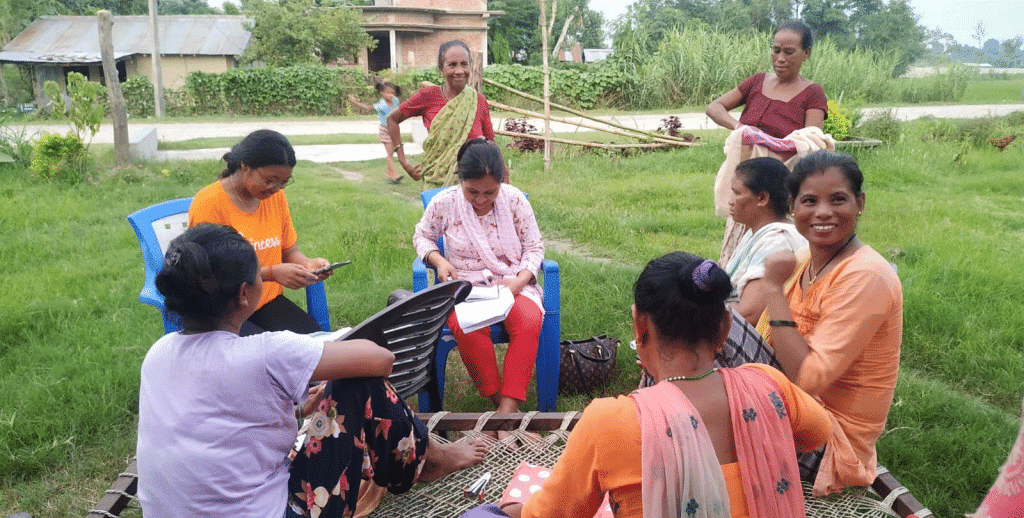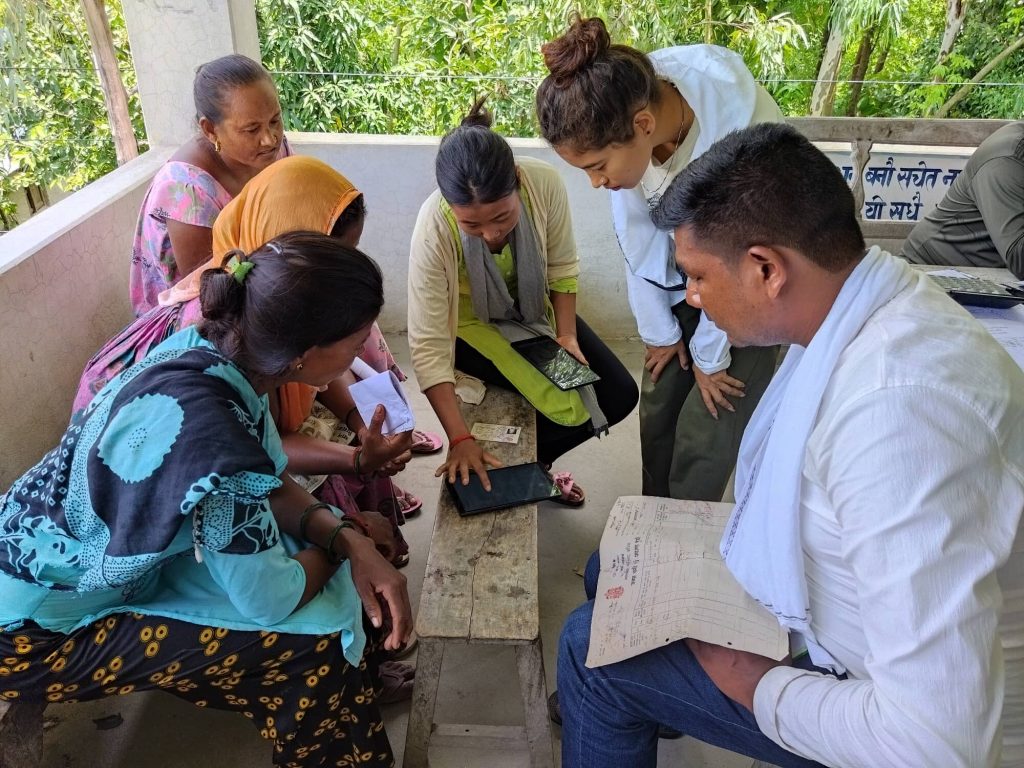While we aim to reduce risk by minimizing the physical impact of floods, insurance plays a key role in preventing communities from experiencing severe hardship in the event of a destructive weather event. In partnership with the InsuResilience Solutions Fund, Practical Action (a member of the Zurich Flood Resilience Alliance) has introduced a first-of-its-kind mechanism in Nepal’s lower Karnali basin.
Communities in the basin are affected by recurrent riverine floods (which is when intense rainfall causes the water level in the river to rise, and spill onto the land). Many people living by the river depend on subsistence farming to survive, meaning a flood can have disastrous consequences.
Some have turned to indemnity insurance as a means of transferring this risk, but the complicated claims process has discouraged many others, who therefore remain unprotected. At Practical Action, we believe that parametric insurance provides the answer.

What is parametric insurance?
Also known as index-based insurance, parametric insurance provides compensation when the threshold for pre-agreed parameters, such as levels of flooding or rainfall, are surpassed. Payments are therefore made based on the intensity of the event, rather than the specific losses. The claims process is much simpler and more transparent, meaning communities can move from disaster to recovery at a faster pace.
Introducing the new product in lower Karnali
The new flood insurance was approved by the Insurance Board of Nepal, and officially launched on 26th July 2022. The hosts were Tilak Ram Sharma, Minister of Internal Affairs and Law of Lumbini Province, and Dr. Rana Bahadur Rawal, Minister of Internal Affairs and Law of Sudurpaschim Province. The launch was well attended and garnered both national and local media attention.
“Since this insurance is about to be practiced for the first time in Nepal, the assistance of all parties is very much required. Therefore, advice and suggestions from various partners engaged in disaster management will largely contribute to the success of this insurance.”
Tilak Ram Sharma, Minister of Internal Affairs and Law of Lumbini Province
Connecting farmers to the new product is now underway through the Shikhar Insurance Company Limited (SICL) and twelve cooperatives. ‘Naari Kalyan Sanaa Kisaan Krishi Sahakari’ is the first cooperative to hold the group policy from the insurance company and is rolling out the product to its constituents.

Overcoming challenges and looking ahead
Parametric insurance index-setting, and reaching the final payout mechanism, is complex. It requires data-intensive methodologies (as well as the technology to access them), and the capability to model flood risk.
Typically, international re-insurance companies accept modelling using data from GloFAS (The Global Flood Awareness System) and only consider riverine floods, not pluvial floods (which is one that occurs despite the absence of a nearby body of water). Within Nepal, the preference is to use indicators set by the national Office of Hydrology & Metorology. This new product strikes the balance; the flood level at the Karnali River station #280 (which also informs early warning systems) provides the data, and the salient index of the approved product is as follows:
| Flood level (Index) | Payout (in %) |
| 10.80 – 11.80 | 10% |
| 11.81 – 12.80 | 25% |
| 12.81 – 13.80 | 50% |
| 13.81 – 14.80 | 75% |
| 14.81 and above | 100% |
The premium is 7% of the insured amount, a sum that varies from place to place depending on the characteristics and value of the land. In Nepal, some agricultural insurance products are eligible for up a subsidy of up to 80% from the federal government. We focused on paddy rice, as it is grown primarily during the monsoon season when floods are most likely to occur. While the government approved the insurance product, it unfortunately has not yet granted access to the subsidy.
Despite this disappointment, cooperatives and smallholders still feel that index-based insurance has a lot to offer, and are purchasing the policy. There is also optimism that uptake will increase among the local farmers, especially once timely payouts to those with the insurance start to occur.
Find out more about the Zurich Flood Resilience Alliance’s work in Nepal here

Comments